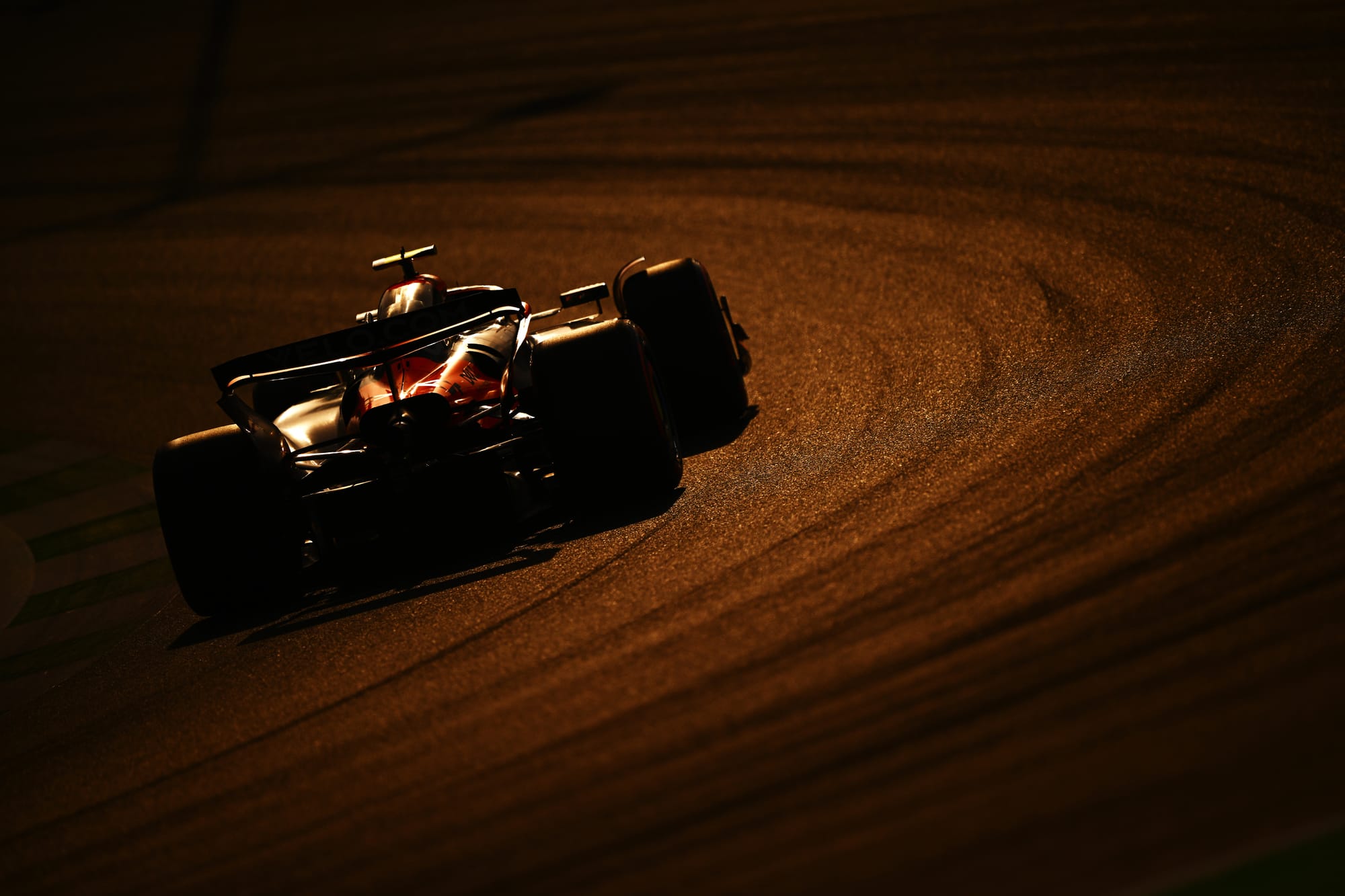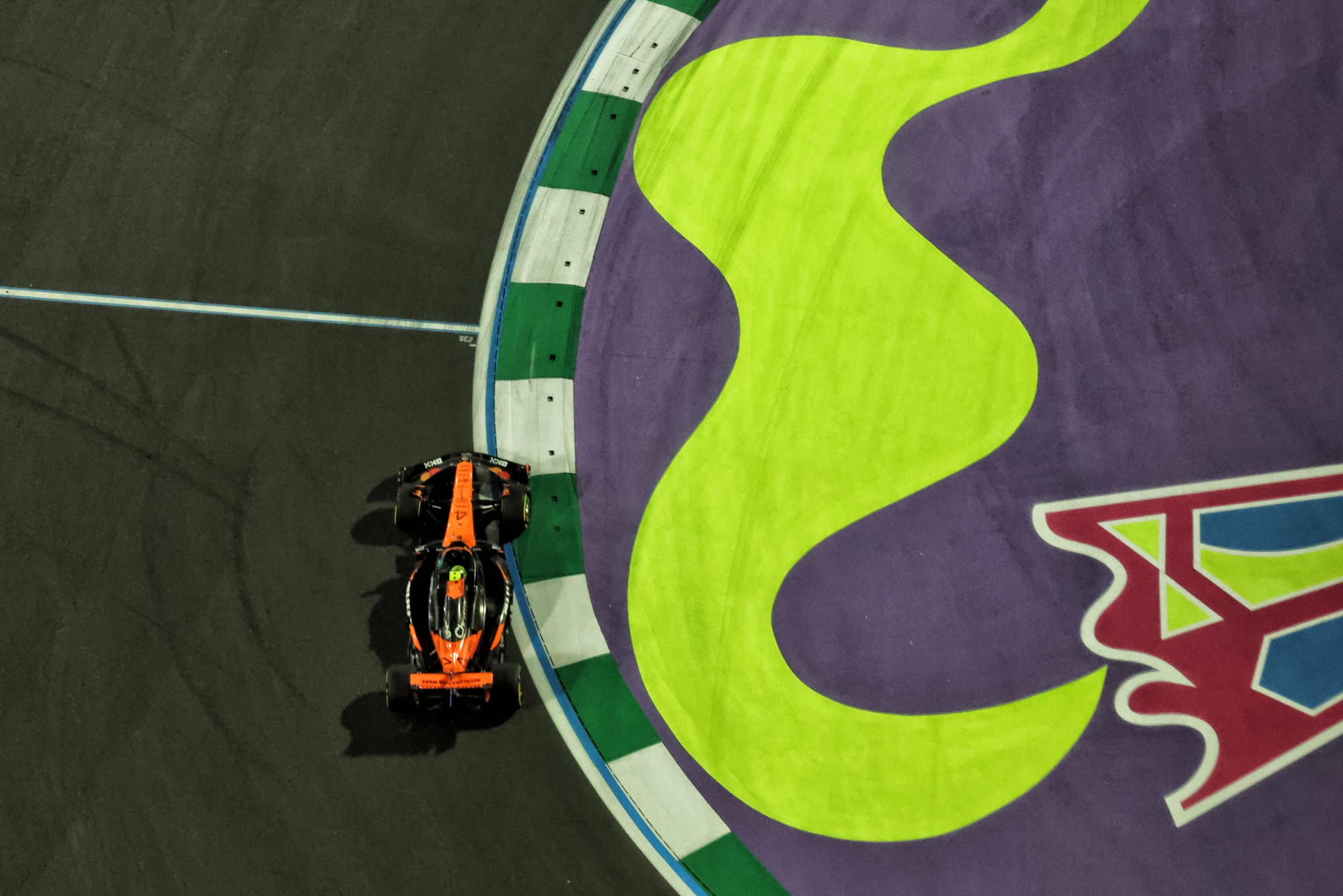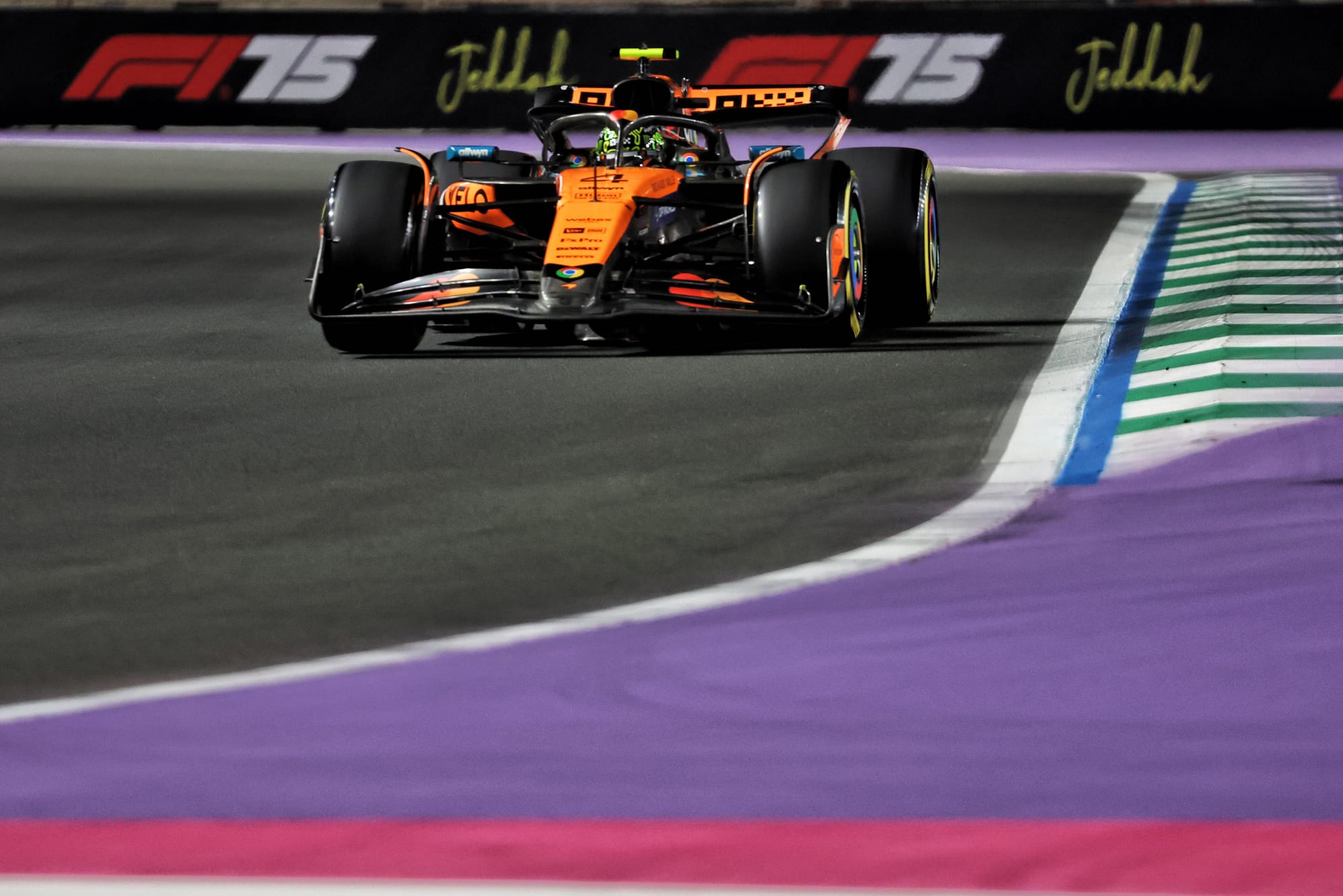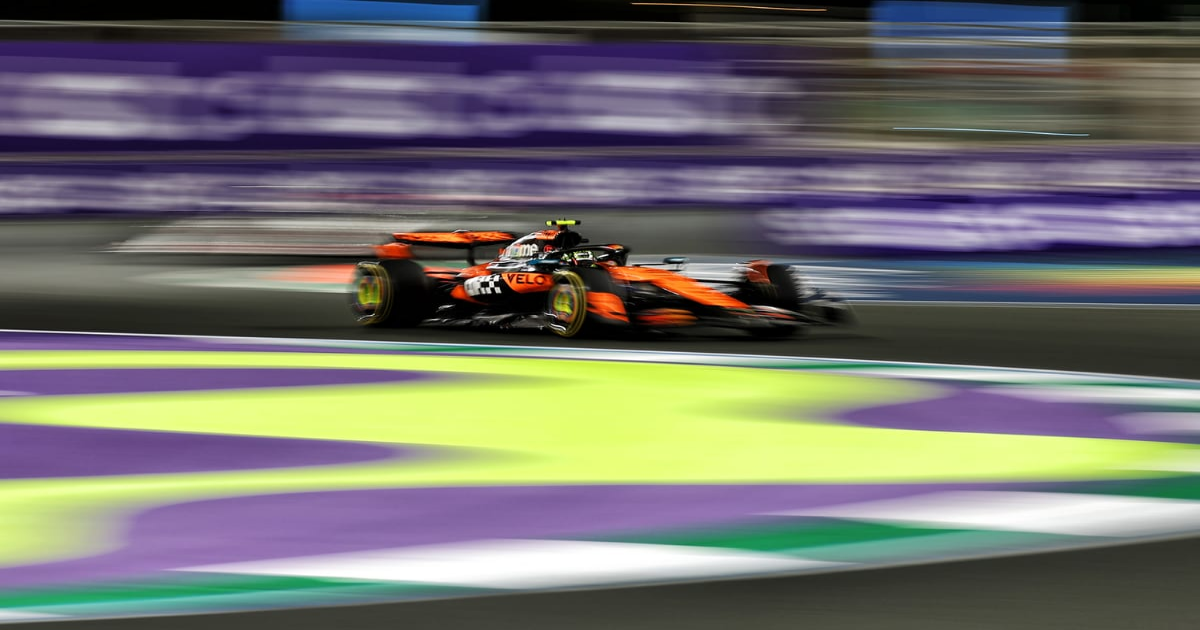Lando Norris’s costly qualifying crash at the Saudi Arabian Grand Prix is another “episode” in getting caught out by McLaren’s Formula 1 car at the limit.
After topping practice and looking the favourite for pole, Norris has made his Jeddah race much trickier than it should be by crashing in the first sector on his first run in Q3.
He will start 10th, with Max Verstappen on pole and Norris’s McLaren team-mate and main championship rival Oscar Piastri in second.
Norris admitted after qualifying he “shouldn’t be taking any silly risks like I seem to have done”, but believed it was a different situation to his previous disappointment just a week ago in Bahrain, where Norris heavily criticised his own performance and driving.
“This has got nothing to do with it, this is just a separate mistake,” Norris said in Jeddah.
While the circumstances of this corner entry misjudgement were different to Bahrain, where Norris struggled against Piastri and had some style incompatibilities with the 2025 McLaren exposed, team boss Andrea Stella indicated there is a connection in how Norris is performing at the limit.
“It was all ready for a very strong weekend, but I think in Q3, when Lando tries to squeeze a few more milliseconds out of the car, what we see – and I think we are starting to see this even better in the data, in terms of identification of what is going on – the car doesn’t respond as he expects,” said Stella.
“This is a behaviour that kind of surprises him.

“In a way it’s almost quite episodical. What’s happening is an episode, and it’s an episode that I think starts from some of the work that we have done on the car.
“It made the car faster overall, but I think it took something away from Lando in terms of predictability of the car once he pushes the car at the limit.”
This is tied to the well-established characteristics of the McLaren, which since testing has been very quick but capable of catching its drivers out.

Norris seems more prone to this, partly because his driving style of holding a higher minimum speed through the corner asks more of the car and can induce problems, and partly because he seems to be feeling and judging the limit of the car less effectively than Piastri.
Stella said the responsibility in mitigating this is partly on the team, to produce a car that gives Norris the confidence and comfort he needs, but also on Norris to be able to adapt. Stella compared it to Lewis Hamilton talking about adjusting his preferred driving style to suit his new Ferrari – and said that in qualifying, this kind of conscious thought is a bad fit.
“These cars are so fast, they are so demanding in terms of just adopting a very natural driving style,” said Stella.
“Because these cars are too fast to think; you either kind of get what you anticipate from the car, or you’re going to be slow. And Lando doesn’t accept to be slow.”
The implication is that Norris’s disconnect with the McLaren has effectively left him error-prone in key moments, even though the errors are quite small, like taking slightly too much speed into a corner or not lining up his braking and steering lock as precisely as needed.
And as a result, the McLaren is biting him more – because, Stella said, it has a tendency to lose grip very suddenly, presumably at a point that Piastri doesn’t bring the car to as much as Norris.
His example was that if the driver pushes one metre later on the brakes, or is 1km/h faster mid-corner, the car reacts in a way the driver does not anticipate and leaves them “a bit of a passenger”. And he revealed that this is partly because the car does not give the drivers great feedback and this leaves them slightly guessing what it will do.

Asked by The Race if the trend McLaren is observing with Norris’s Q3 struggles is a broad one of small imprecisions in different ways, or if something specific is connecting them, Stella said: “The car has a certain envelope of performance. But the way you exploit this envelope is a little tricky for our drivers.
“There’s a lot of grip, there’s a lot of grip, [then] grip disappears. You go 1km/h faster and the grip disappears.
“This transition seems to be quite sharp, and the feedback you receive from the car in terms of understanding and leaning on this limit is relatively numb.
“I think that’s where the drivers almost have to use a lot of guessing as to how the car will behave and there’s not much information and cueing coming from the car.
“That’s what we are struggling a bit from a team point of view [with], in terms of achieving what we want in designing a car that provides this kind of feedback to drivers, and what the drivers may struggle [with] on their side because they need to use quite a lot of guessing as to what the car will be doing.
“You see that every session, when we sort of push 99%, we seem to be having a decent competitiveness.
“But when it’s the time to have that final one tenth of a second, then it gets pretty tricky to go and materialise it.”
McLaren may be able to rectify this during the season with improvements to its car but until that proves possible Norris may need to stop himself chasing the final few milliseconds of laptime – at least on tracks like Jeddah, where the reward of achieving that is great but the risk of getting it wrong is extremely costly.
